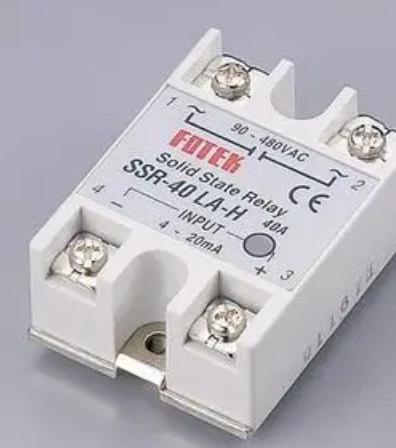In modern industrial automation and intelligent control systems, solid-state relays (SSR), as an efficient non-contact switching device, have become an indispensable part of electronic control systems due to their excellent performance and wide range of applications. This article aims to analyze in detail the definition, advantages and limitations of solid-state relays, application scenarios, as well as different types of SSRs and their differences in practical applications.
1. Definition and characteristic analysis of solid state relays
Solid State Relay (SSR for short) is a contactless switching device that uses semiconductor devices to achieve switching control functions. Compared with traditional mechanical relays, SSR uses photoelectric isolation technology to achieve isolation between input and output, thereby providing a safer and more reliable control method. A standard single-phase SSR includes two input control terminals and two output terminals, which can quickly change from off-state to on-state after receiving a DC or pulse signal to control the load circuit.
The main advantages of SSR include: high operating reliability, long life, fast response, no noise and no sparks, no electromagnetic interference, strong anti-interference ability, small size, and resistance to shock and vibration. In addition, SSR is also compatible with various logic circuits (such as TTL, DTL, HTL, etc.) and can drive large current loads with tiny control signals. However, SSR also has some limitations, including voltage drop in the on-state, off-state leakage current, inability to apply to both AC and DC, limited number of contact groups, and sensitivity to overcurrent and overvoltage.

2. Application fields of solid state relays
Solid state relays have been widely used in many fields due to their excellent performance. SSR plays a key role in computer peripherals, electric furnace heating and thermostatic systems, CNC machine tools, remote control systems and industrial automation equipment. In addition, it is also used in signal lights, flashers, stage lighting control systems, instrumentation, medical equipment, copiers, automatic washing machines, automatic fire protection and security systems and other fields. In environments that require explosion-proof, moisture-proof, and anti-corrosion, such as the chemical industry and coal mining industry, SSR also shows its unique advantages.
3. Classification and characteristics of solid state relays
Solid state relays can be divided into many types according to different classification standards. From the perspective of switching methods, SSR is mainly divided into voltage zero-crossing conduction type (zero-crossing type) and random conduction type (random type). Zero-crossing SSR is mainly used for on/off control of load circuits, while random SSR is widely used in situations where chopper voltage regulation is required. From the perspective of output switching elements, SSR can be divided into two-way thyristor output type and one-way thyristor anti-parallel type. In addition, depending on the installation method, SSR can be divided into pin-in type for printed circuit boards and device type fixed on the metal base plate. The latter usually needs to be cooled by a heat sink. The design of the input end is also different, including wide-range input constant current source type and series resistor current limiting type.
4. Differences in uses between zero-crossing type and random type SSR
There are obvious differences in functions and applications between zero-crossing type and random type SSR. The zero-crossing SSR is mainly designed to realize on/off control of the load circuit, similar to the function of a traditional relay. The random SSR is mainly used for chopper voltage regulation operations and is suitable for occasions where fine voltage adjustment is required. It should be pointed out that in order for the random SSR to realize the voltage regulation function, its control signal must be synchronized with the power grid, and the rising edge can change within the range of 0°-180°. Different from the zero-crossing SSR, the voltage waveform generated by the random SSR at the output is a sinusoidal wave with a missing angle, which leads to a certain degree of grid pollution and noise problems.
To sum up, solid-state relays have become an indispensable part of modern electronic control systems with their unique advantages and wide range of applications. By in-depth understanding of the working principle, classification and application differences of SSR, engineers and technicians can more effectively select and apply SSR to meet the control needs of different occasions.
